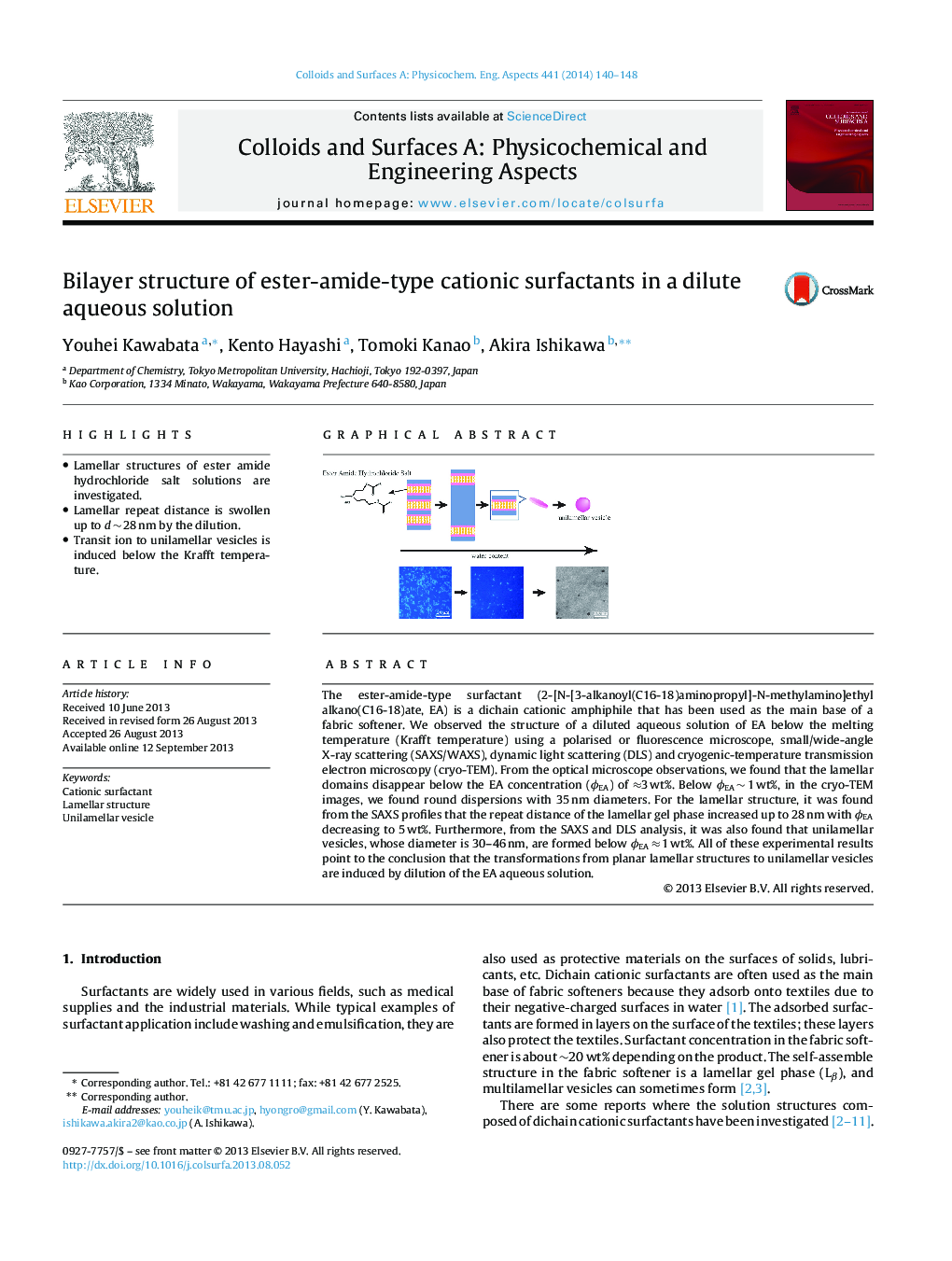| Article ID | Journal | Published Year | Pages | File Type |
|---|---|---|---|---|
| 593188 | Colloids and Surfaces A: Physicochemical and Engineering Aspects | 2014 | 9 Pages |
•Lamellar structures of ester amide hydrochloride salt solutions are investigated.•Lamellar repeat distance is swollen up to d ∼ 28 nm by the dilution.•Transit ion to unilamellar vesicles is induced below the Krafft temperature.
The ester-amide-type surfactant (2-[N-[3-alkanoyl(C16-18)aminopropyl]-N-methylamino]ethyl alkano(C16-18)ate, EA) is a dichain cationic amphiphile that has been used as the main base of a fabric softener. We observed the structure of a diluted aqueous solution of EA below the melting temperature (Krafft temperature) using a polarised or fluorescence microscope, small/wide-angle X-ray scattering (SAXS/WAXS), dynamic light scattering (DLS) and cryogenic-temperature transmission electron microscopy (cryo-TEM). From the optical microscope observations, we found that the lamellar domains disappear below the EA concentration (ϕEA) of ≈3 wt%. Below ϕEA ∼ 1 wt%, in the cryo-TEM images, we found round dispersions with 35 nm diameters. For the lamellar structure, it was found from the SAXS profiles that the repeat distance of the lamellar gel phase increased up to 28 nm with ϕEA decreasing to 5 wt%. Furthermore, from the SAXS and DLS analysis, it was also found that unilamellar vesicles, whose diameter is 30–46 nm, are formed below ϕEA ≈ 1 wt%. All of these experimental results point to the conclusion that the transformations from planar lamellar structures to unilamellar vesicles are induced by dilution of the EA aqueous solution.
Graphical abstractFigure optionsDownload full-size imageDownload as PowerPoint slide
